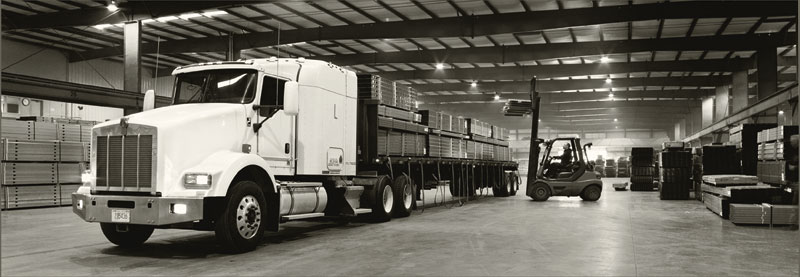Sustainability is not a one-size-fits-all approach, nor is it a one-and-done quick fix. It requires continuous innovation, a relentless focus on resource efficiency, and a fundamental shift in mindset. This goes beyond simple certifications—it’s about embedding sustainability into every stage of a product’s lifecycle, from sourcing and manufacturing to distribution and end-of-life solutions.
If you can’t tell, we’ve been thinking about sustainability a lot lately. (Hasn’t everyone?) Not just thinking, actually—we’ve been exploring ways we can be more sustainable and lead others to do the same. As North America’s largest manufacturer of cold-formed steel (CFS) framing, one of the most substantial steps we’ve taken in being better environmental stewards is supplying Low Embodied Carbon CFS products, complete with a third-party certified Environmental Product Declaration (EPD). These Low Embodied Carbon products are made with steel strategically sourced from Electric Arc Furnace (EAF) mills, which result in a 30% reduction in embodied carbon.
Think of EAF mills as an electric recycling center for steel: electric currents melt down steel scraps to create new steel products. Overall, this is a much simpler process requiring fewer raw materials and production steps than Basic Oxygen Furnace (BOF) mills, which use either natural gas or coal and coke to melt down raw iron ore.
From a low embodied carbon perspective, all steel would ideally come from EAF mills. But BOF mills still have a benefit in today’s market, because there is not enough steel being recycled to supply the total market demand for new steel products. In fact, sustainability goes beyond environmental impacts—it’s a balance between the planet, people, and prosperity. Maintaining diverse supplier sources by incorporating both EAF and BOF mills into our supply chain provides numerous benefits for Earth, its inhabitants, and long-term financial viability for all stakeholders:
Resilient Supply Chain
By sourcing steel from a mix of EAF and BOF mills, we create a resilient supply chain that is less vulnerable to disruptions. This helps mitigate the impact of any unforeseen challenges in the steel industry, ensuring a consistent and reliable supply.
Mitigation of Price Volatility
Exclusive reliance on EAF mills could potentially lead to supply constraints, resulting in increased prices and longer delivery lead times. By maintaining a balance between EAF and BOF sources, we contribute to the mitigation of price volatility, ensuring cost stability for our customers.
Collaborative Sustainability
Encouraging sustainability across the entire steel industry is crucial. By engaging with both EAF and BOF suppliers, we actively support the adoption of environmentally responsible practices across a broader spectrum of steel production processes. BOF mills are currently exploring many ways to produce more sustainable steel, such as Hydrogen Direct Reduction and Carbon Capture, Utilization & Storage, and we are excited to engage with these suppliers for our LEC product lines as these technologies become active in the market.
Market Responsiveness
Maintaining a mix of supplier sources allows us to be agile and responsive to market dynamics. It provides the flexibility to adapt to changes in demand, technological advancements, and industry trends, positioning us as a proactive and adaptable player in the marketplace.
Sustainability looks different to different people, companies, and industries, but we hope our approach can serve as a roadmap for others. And as the market changes and new advances in sustainability arise, we’ll continue to lead by example and innovate forward. Bettering the built environment (and beyond) demands nothing less.
